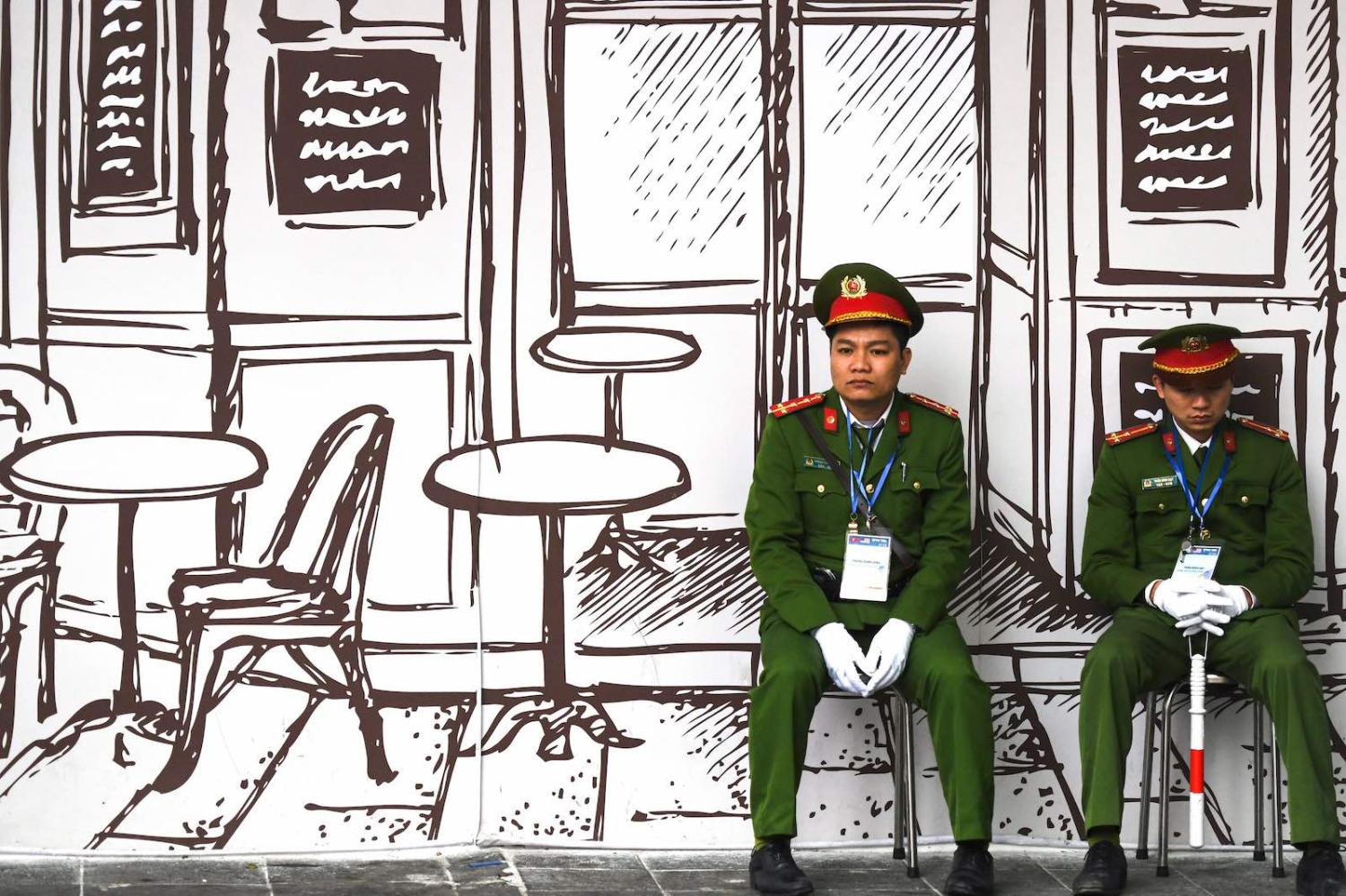Even a few hours in Ho Chi Minh City, still called Saigon by the locals, will give you a feel for how much the Vietnamese economy is booming. The international airport completed in 2007 can handle 17 million passengers a year, the city’s first metropolitan train line is under construction, and ever taller office and apartment blocks are beginning to rise both inside and now outside the city’s riverfront centre.
The bedrock in Vietnam’s enviable run of prosperity has been the shift of low-cost manufacturing from China. In 2010, for instance, Vietnam produced more Nike sports shoes than China for the first time. In 2018, foreign direct investment almost doubled compared with 2017, with 112 countries and territories investing in Vietnam.
Vietnam has history of successfully playing China off against Russia, and the US is now firmly in that mix.
In downtown Ho Chi Minh City, plastered in front of the metro stop being built between the city’s colonial-era Opera House and the famed Rex Hotel, is a large sign that reads “Japan-Vietnam” with the flags of the nations in the top corners. The best restaurants in the city centre are peppered with tables of Japanese businessmen. Indeed, Japan was the largest investor in Vietnam in 2018 with US$8.59 billion, 24.2% of the total investment capital, according to official figures. It was followed by South Korea and Singapore.
The Chinese, too, are showing increasing interest, according to investment consultants in Vietnam, particularly across the border in and around Hanoi, which gained the biggest slice of foreign investment of any region last year at 21%. The vast majority companies have upped sticks from China’s increasingly unaffordable wages for mass produced items as the corporate state has turned focus away from being the world’s factory in a bold strategic bid at being the world’s research lab. And on 30 June, Vietnam inked a free trade agreement with the European Union, lifting its competitiveness with its Asian neighbours, further diversifying its market risks and guaranteeing a fresh investment surge.
This trend in Vietnam’s economy is being brought into the mainstream media spotlight by the trade war between the US and China. With a surge in goods being imported into the US from other parts of Asia, Vietnam is shaping as arguably the key beneficiary of the trade war. So much so, US President Donald Trump, just ahead of the Osaka G20 meeting where the trade war hit one of its pauses, threatened to impose tariffs on Vietnam as well, describing the country as “the single worst abuser of everybody”. This, even as the US has moved strategically closer to its former rival in recent years.
“A lot of companies are moving to Vietnam,” Trump said, “but Vietnam takes advantage of us even worse than China. So there’s a very interesting situation going on there.” There have been credible concerns about the scale of that Chinese goods being shipped to the US via Vietnam and rebadged as “Made in Vietnam” to escape tariffs.

Vietnam is not the only significant beneficiary of the shift out of China to low wage countries for manufacturing, a trend being accelerated by the trade stoush. Bangladesh (now the world’s second-largest garment maker after China), Cambodia and Myanmar, Indonesia, Thailand and Malaysia have also seen companies shift from China into swelling South and Southeast Asian manufacturing hubs.
But Vietnam is more than just a low-cost garment maker and is attracting a formidable investor list amongst the world’s top technology brands to build parts and assemble goods.
South Korea’s Samsung, the world’s biggest phone maker, has invested billions of dollars in building its manufacturing base in the Saigon High-Tech Park, closing its factory in Shenzhen, China, home to rival Huawei Technologies in 2018. Japan’s Olympus followed suit, shuttering its factory in Guangdong province in favour of Vietnam Intel. Schneider and Jabil have also joined the technology park, and in 2015 Microsoft moved its Nokia manufacturing from Beijing to Hanoi.
Vietnam’s Communist party has subtly different structures to that in China, driven in some part by a need for geographical balance at the top, helping it be less susceptible to the emergence of the generational strongman as China continues to throw up. It has history of successfully playing China off against Russia, and the US is now firmly in that mix. Business people say as China pushes forward with its nationalistic indigenous business policies, Vietnam is now more business friendly to foreign companies, especially in the strategically critical technology sector.
Concerns in the West continue to rise about the potential of Chinese technology into infrastructure, both in the broader economy with vulnerable corporate IT systems, and in the defence arena. The poster child is 5G mobile phone networks, where there are multiple concerns about an integrated Chinese vendor led by Huawei using so-called backdoors into the networks and their vast databanks of customer data. In stunning recent move, the Vietnamese Army controlled major mobile network Viettel joined only Australia, the US and Japan in banning Huawei equipment from its 5G networks, boosting Vietnam’s position as the standout China alternative.
According to figures from the US International Trade Commission, US mobile phone imports from Vietnam more than doubled in the first four months of 2019 compared to 2018, while computer imports rose by 79% for the same period. Vietnamese imports into the US increased in garments, textiles, furniture and dried fish, which was previously processed in China for consumption in the US before Trump’s tariffs hikes.
Vietnam has climbed the US import chart to 8th position in the first four months of 2019. Ranked 12th for the same period last year, it has leapt over Ireland, Italy, India and France so far this year. This shows how Trump’s anti-Vietnam hyperbole could introduce the very long piece of string that would almost certainly unravel the already fragile global economy if the tariff wars start to shift down the global supply chain.
Yet for now, Vietnam continues to move closer to the US in the defence sphere – pulling US tech investment with it. At the same time, a flood of Chinese investment is also beginning to pour in, with Vietnam considered least worst lower cost offshore option and a system it intimately understands. The country that beat off the US and China militarily in less than a decade is continuing its remarkable trend, winning from the trade war every which way.

